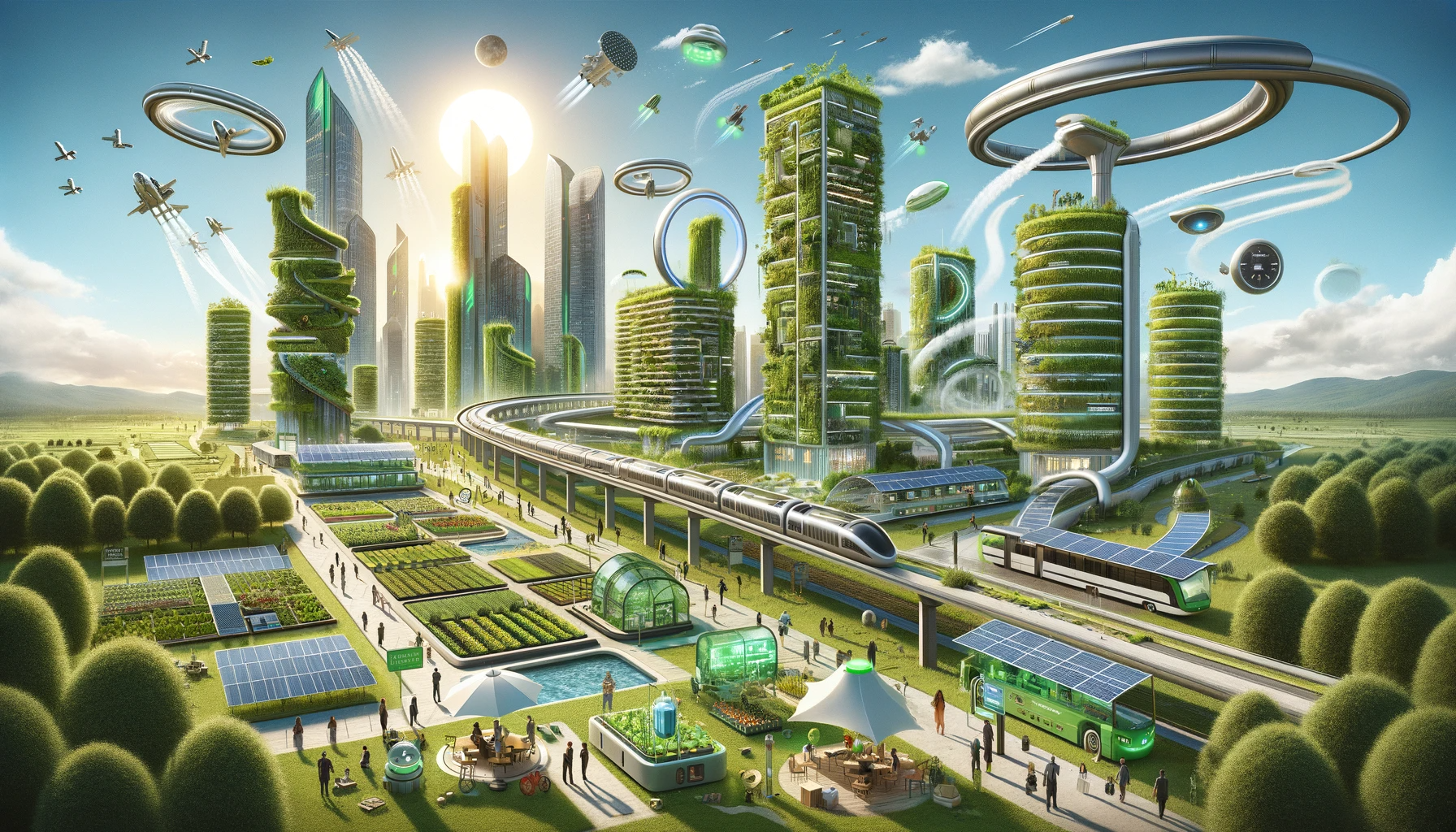The concept of a green future is increasingly becoming a reality thanks to a range of innovations in sustainable living. These innovations are not only promising for the environment but also offer substantial economic benefits.
1. Renewable Energy and Energy Management
Advancements in renewable energy, particularly in solar and wind power, are making significant strides. The integration of energy storage solutions like lithium-ion batteries is revolutionizing how we harness and store this energy. Additionally, smart grids and energy management systems are transforming our electricity consumption, optimizing energy usage, and reducing waste.
2. Sustainable Transportation
The electric vehicle (EV) industry is witnessing rapid growth. Improvements in battery technology are making EVs more affordable and efficient, and the expansion of EV charging infrastructure is supporting this transition.
3. Green Building Practices
Incorporating sustainable features into construction projects, such as energy-efficient designs and eco-friendly materials, green buildings are significantly reducing energy consumption and carbon emissions.
4. Circular Economy
The circular economy model is gaining traction, focusing on waste reduction and resource efficiency. Innovations in recycling and materials management are playing a key role in this area.
5. AI and Technology in Sustainability
Artificial Intelligence (AI) is being employed in various sectors like agriculture, helping in resource conservation and reducing environmental impacts. Smart home technologies are also contributing to energy efficiency in residential spaces.
6. Water Conservation Technologies
Technologies for efficient water management, like smart irrigation systems and home-based water recycling, are essential for sustainable living. Moreover, advancements in desalination technology are making seawater conversion more energy-efficient.
7. Green Cloud Computing
Tech giants are investing in renewable energy sources to power data centers, and innovations in cooling systems and energy-efficient hardware are reducing the carbon footprint of cloud computing.
8. Sustainable Agriculture Technologies
Technologies like precision farming, vertical gardening, and AI crop monitoring are optimizing resource use in agriculture, contributing to environmental sustainability and global food security.
9. Blockchain for Sustainable Supply Chains
Blockchain technology is being used to provide transparent information about product origins and journeys, enabling environmentally conscious consumer choices and ensuring the authenticity of eco-friendly claims.
Economic Benefits
Green innovation is not just environmentally beneficial; it also stimulates economic growth. Doubling green patent filings can boost GDP by up to 1.7 percent in five years. Green technologies often require complementary innovation, leading to more overall economic growth.
Conclusion
The convergence of technology and sustainability is shaping a future where environmental responsibility and innovation go hand in hand. These advancements in green technologies offer a pathway to a more sustainable and prosperous world.
references for the article “Green Futures: Innovations in Sustainable Living”:
- SLT Team. (2023, November 2). Green Technology Trends: Innovations for a Greener Future. Sustainable Living Tips. Retrieved from https://www.sustainablelivingtips.org
- International Monetary Fund (IMF). (2023). How Green Innovation Can Stimulate Economies and Curb Emissions. Retrieved from https://www.imf.org
- Sustainable Review. (2023). Top 10 Green Technology Innovations. Retrieved from https://sustainablereview.com
- TechBullion. (2023). Sustainable Tech Trends in 2024: Green Innovations Shaping the Future. Retrieved from https://techbullion.com


